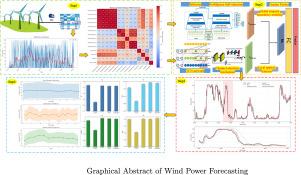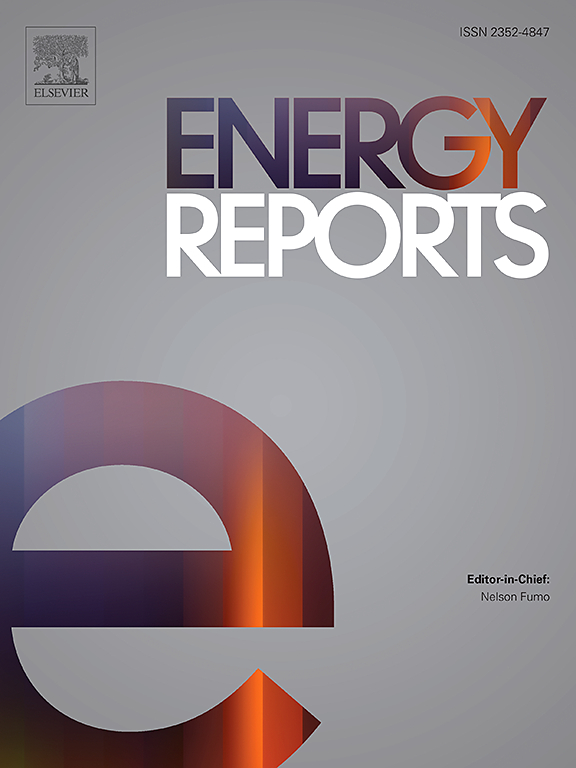超短期风力发电预测:一种集成信息源和senet增强时间卷积网络的混合并行架构
IF 5.1
3区 工程技术
Q2 ENERGY & FUELS
引用次数: 0
摘要
近年来,风电在电网中所占的份额越来越大,风电预测对电网的稳定性和效率至关重要。深度学习等先进技术改善了预测,特别是在解决风电数据的波动性和复杂性方面。然而,现有的研究往往缺乏有效的模型集成和最优的超参数整定。许多复杂的算法无法实现协同,风电数据中的潜在信息尚未得到充分挖掘,限制了准确性的进一步提高。因此,有效整合深度学习方法和充分挖掘数据特征是推进超短期风电预测的关键挑战。提出了一种基于Informer和TCN-SENet架构并行融合的超短期风电预测模型。该模型充分利用了Informer在长序列建模中的效率和TCN-SENet对局部时间特征的敏感性。通过特征工程和滑动窗口机制,该模型实现了多变量输入和单变量输出的高精度预测。本文使用真实世界的风电场数据集对Transformer-encoder、Informer及其改进的变体进行了比较实验。结果表明,本文模型在所有性能指标上都优于基准模型,表现出优越的泛化能力和鲁棒性。此外,本文的模型在捕捉风力发电输出的趋势和细粒度变化方面显示出明显的优势。为风电超短期高精度预测提供了有效的新途径,为智能电网调度和可再生能源并网提供了理论和方法支持。本文章由计算机程序翻译,如有差异,请以英文原文为准。

Ultra-short-term wind power forecasting: A hybrid parallel architecture integrating informer and SENet-enhanced temporal convolutional networks
In recent years, the increasing share of wind energy in power grids has made wind power forecasting crucial for grid stability and efficiency. Advanced technologies such as deep learning have improved forecasting, particularly in addressing the volatility and complexity of wind power data. However, existing studies often lack effective model integration and optimal hyperparameter tuning. Many complex algorithms fail to achieve synergy, and latent information in wind power data remains underexplored, limiting further accuracy improvements. Therefore, efficiently integrating deep learning methods and fully mining data features are key challenges for advancing ultra-short-term wind power forecasting. This paper proposes an ultra-short-term wind power forecasting model based on the parallel fusion of Informer and TCN-SENet architectures. The model fully leverages the efficiency of Informer in long-sequence modeling and the sensitivity of TCN-SENet to local temporal features. Through feature engineering and a sliding window mechanism, the model achieves high-precision forecasting with multivariate inputs and univariate outputs. This paper conducts comparative experiments using real-world wind farm datasets against Transformer-encoder, Informer, and their improved variants. The results demonstrate that this paper’s model consistently outperforms the benchmark models across all performance metrics, exhibiting superior generalization ability and robustness. Furthermore, this paper’s model shows clear advantages in capturing both the trend and fine-grained variations of wind power output. This paper provides an effective new approach for ultra-short-term, high-precision wind power forecasting, and offers theoretical and methodological support for smart grid scheduling and renewable energy integration.
求助全文
通过发布文献求助,成功后即可免费获取论文全文。
去求助
来源期刊

Energy Reports
Energy-General Energy
CiteScore
8.20
自引率
13.50%
发文量
2608
审稿时长
38 days
期刊介绍:
Energy Reports is a new online multidisciplinary open access journal which focuses on publishing new research in the area of Energy with a rapid review and publication time. Energy Reports will be open to direct submissions and also to submissions from other Elsevier Energy journals, whose Editors have determined that Energy Reports would be a better fit.
 求助内容:
求助内容: 应助结果提醒方式:
应助结果提醒方式:


